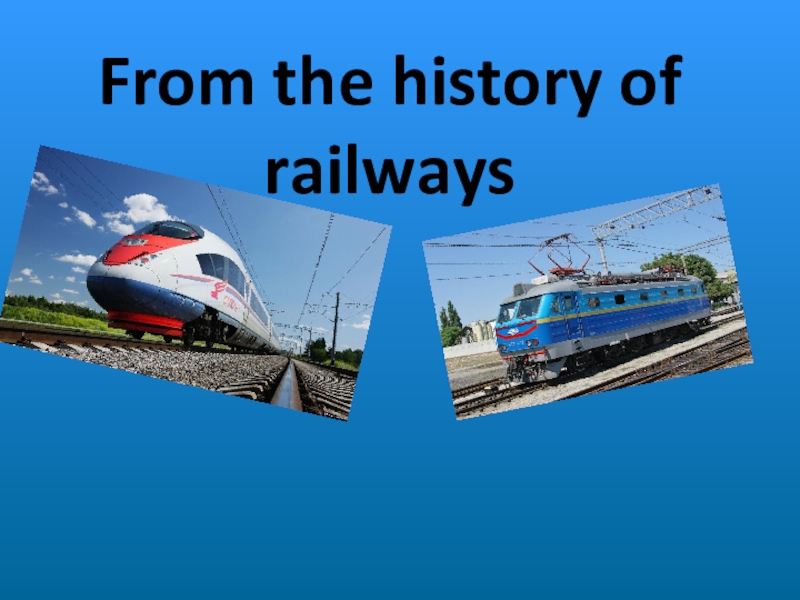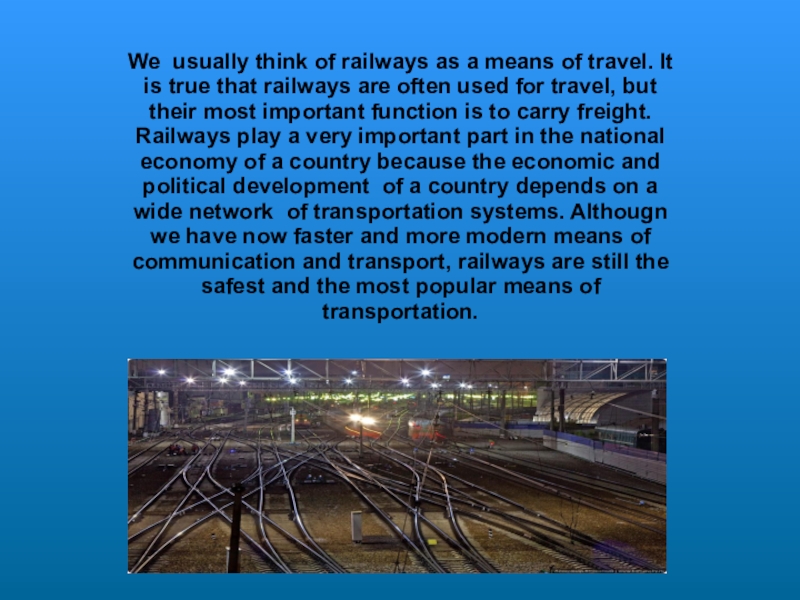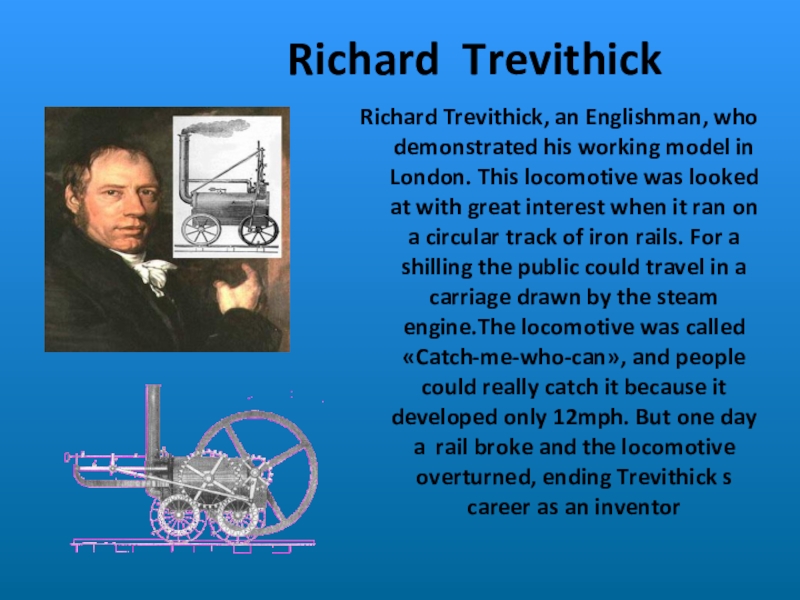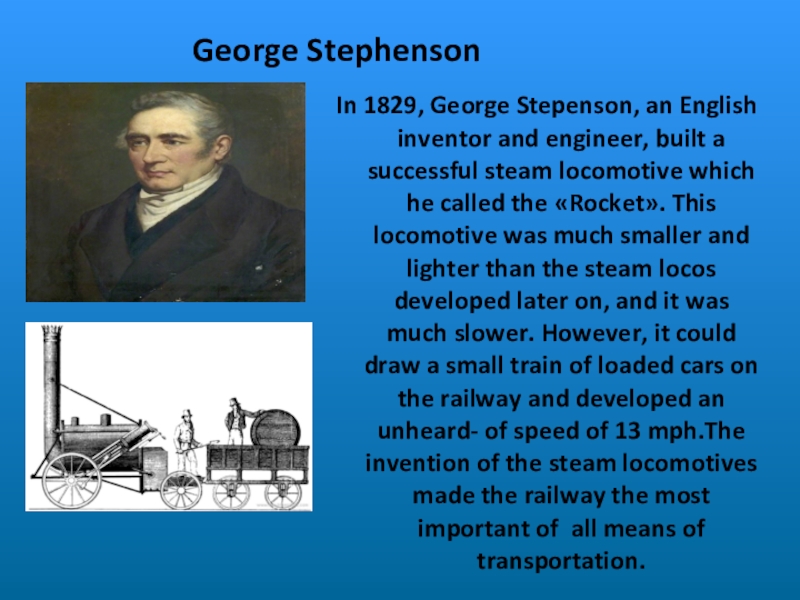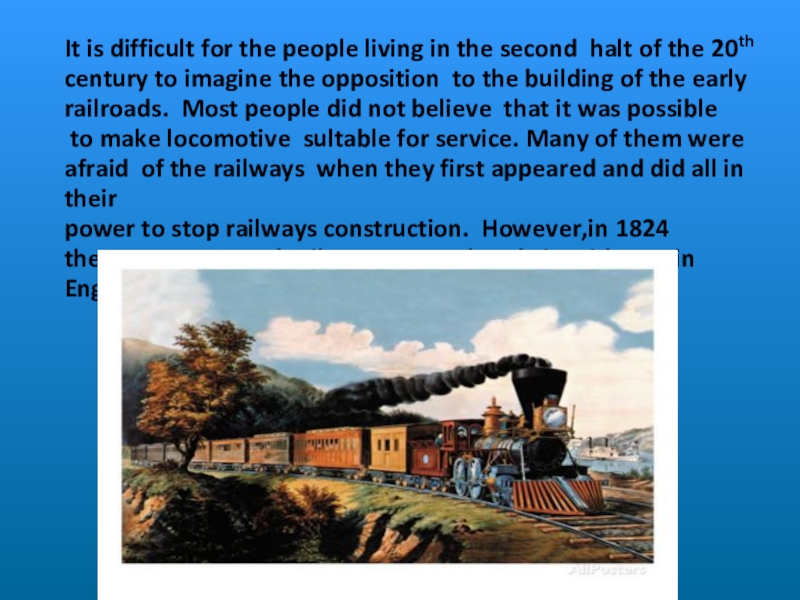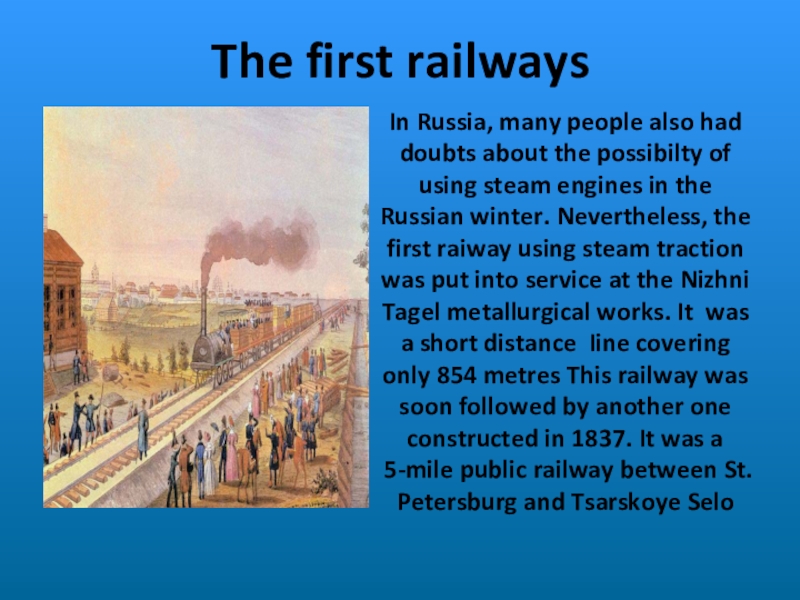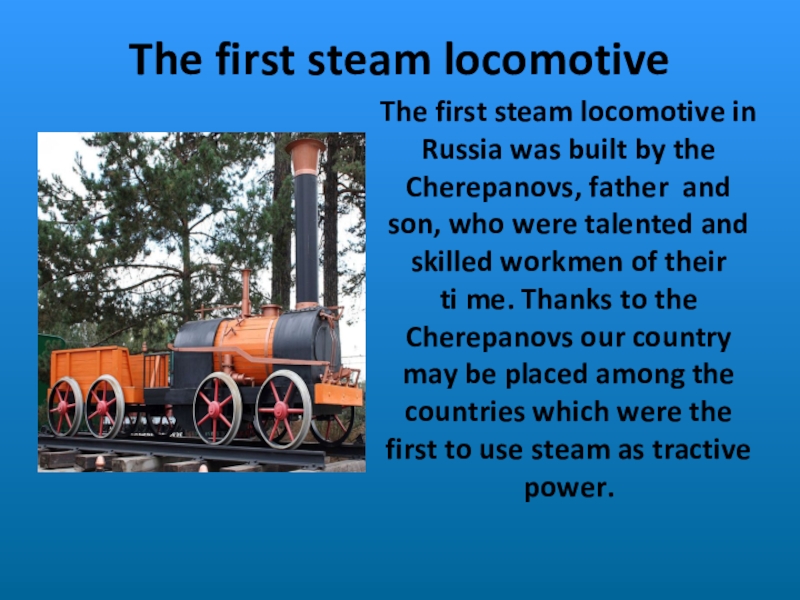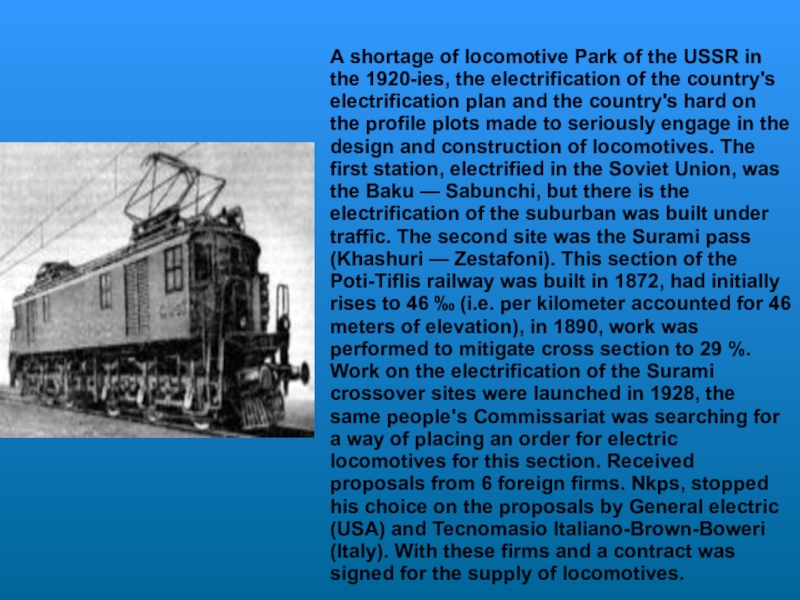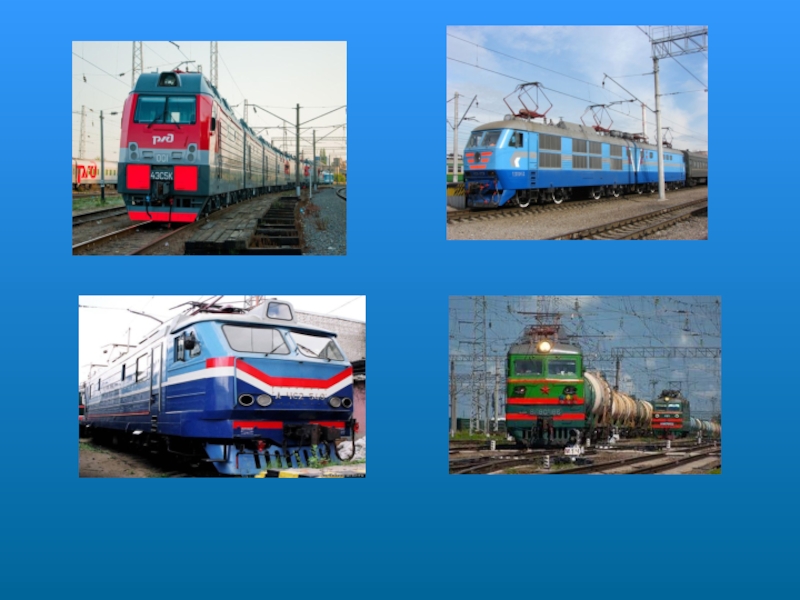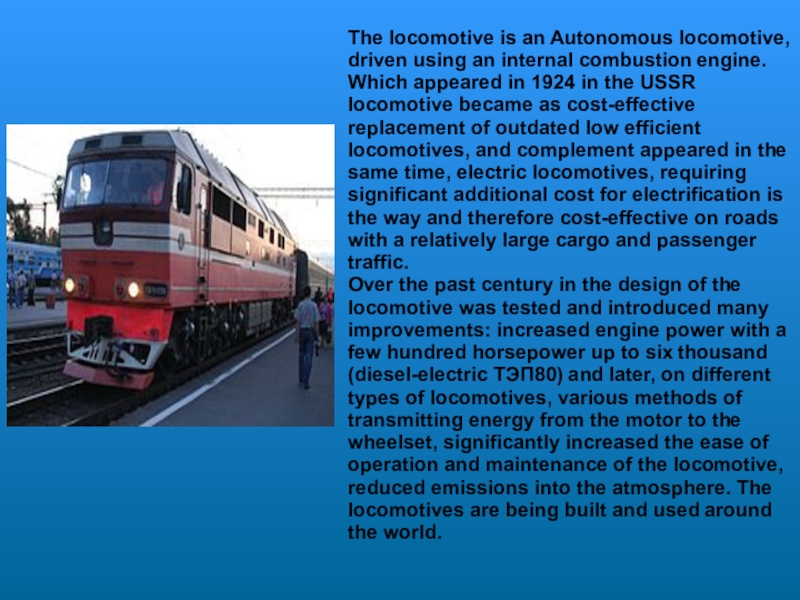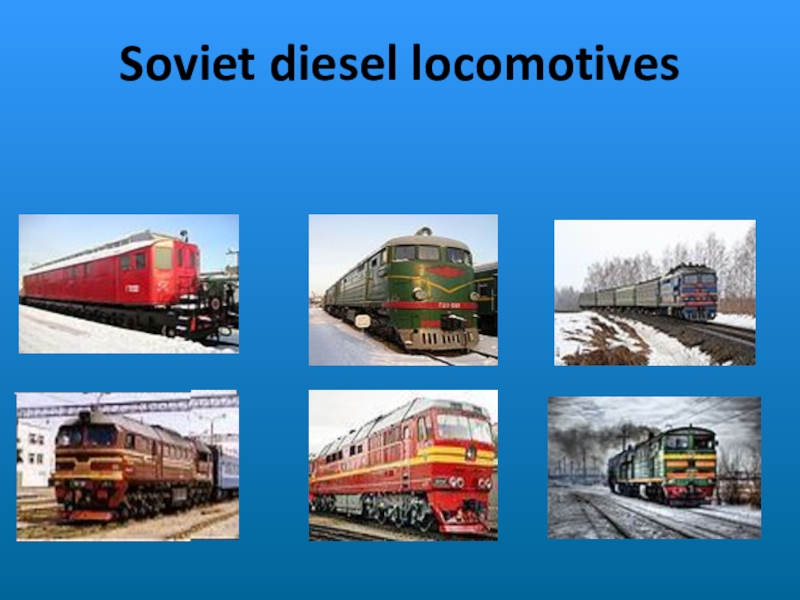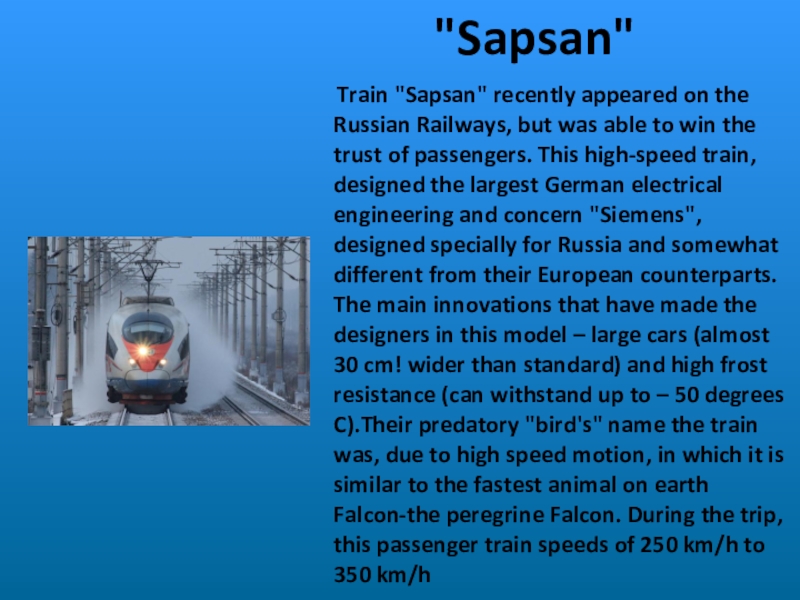Разделы презентаций
- Разное
- Английский язык
- Астрономия
- Алгебра
- Биология
- География
- Геометрия
- Детские презентации
- Информатика
- История
- Литература
- Математика
- Медицина
- Менеджмент
- Музыка
- МХК
- Немецкий язык
- ОБЖ
- Обществознание
- Окружающий мир
- Педагогика
- Русский язык
- Технология
- Физика
- Философия
- Химия
- Шаблоны, картинки для презентаций
- Экология
- Экономика
- Юриспруденция
Иcтория развития железно дорожного транспорта
Содержание
- 1. Иcтория развития железно дорожного транспорта
- 2. We usually think of railways as a
- 3. The early railways were
- 4. Слайд 4
- 5. Слайд 5
- 6. It is difficult for the people living
- 7. The first railwaysIn Russia, many people also
- 8. The first steam locomotive The first steam
- 9. Слайд 9
- 10. Locomotive World railways are now busy in
- 11. A shortage of locomotive Park of
- 12. Слайд 12
- 13. The locomotive is an Autonomous locomotive, driven
- 14. Soviet diesel locomotives
- 15. Слайд 15
- 16. Слайд 16
- 17. Скачать презентанцию
We usually think of railways as a means of travel. It is true that railways are often used for travel, but their most important function is to carry freight. Railways play
Слайды и текст этой презентации
Слайд 3
The early railways were not like the
railways we have today.The very first railways used horses for
drawing trains and were put into operation for transporting such products as coal, ore and timber. Later on, the horse railways were used as passenger transport in large cities. But these railways did not last long.Слайд 4
Richard Trevithick
Richard Trevithick, an Englishman, who demonstrated
his working model in London. This locomotive was looked at with great interest when it ran on a circular track of iron rails. For a shilling the public could travel in a carriage drawn by the steam engine.The locomotive was called «Catch-me-who-can», and people could really catch it because it developed only 12mph. But one day a rail broke and the locomotive overturned, ending Trevithick s career as an inventorСлайд 5 George
Stephenson
In 1829, George Stepenson, an English inventor and engineer, built
a successful steam locomotive which he called the «Rocket». This locomotive was much smaller and lighter than the steam locos developed later on, and it was much slower. However, it could draw a small train of loaded cars on the railway and developed an unheard- of speed of 13 mph.The invention of the steam locomotives made the railway the most important of all means of transportation.Слайд 6It is difficult for the people living in the second
halt of the 20th
century to imagine the opposition to
the building of the early railroads. Most people did not believe that it was possible
to make locomotive sultable for service. Many of them were
afraid of the railways when they first appeared and did all in their
power to stop railways construction. However,in 1824
the steam-powered railways were already in wide use in England.
Слайд 7The first railways
In Russia, many people also had doubts about
the possibilty of using steam engines in the Russian winter.
Nevertheless, the first raiway using steam traction was put into service at the Nizhni Tagel metallurgical works. It was a short distance Iine covering only 854 metres This railway was soon followed by another one constructed in 1837. It was a5-mile public railway between St. Petersburg and Tsarskoye Selo
Слайд 8The first steam locomotive
The first steam locomotive in Russia was
built by the Cherepanovs, father and son, who were talented
and skilled workmen of theirti me. Thanks to the Cherepanovs our country may be placed among the countries which were the first to use steam as tractive power.
Слайд 10Locomotive
World railways are now busy in search of ways to
increase their economic efficiency and the speeds of passenger and
goods trains. One essential condition to achieve this is electric traction. The first attempt to apply electricity to transport purposes was made by Jacobi, a Russian physicist and electrical engineer. In 1838 he ran an electric boat at a speed of about 5 kph on the Neva riverСлайд 11
A shortage of locomotive Park of the USSR in
the 1920-ies, the electrification of the country's electrification plan and
the country's hard on the profile plots made to seriously engage in the design and construction of locomotives. The first station, electrified in the Soviet Union, was the Baku — Sabunchi, but there is the electrification of the suburban was built under traffic. The second site was the Surami pass (Khashuri — Zestafoni). This section of the Poti-Tiflis railway was built in 1872, had initially rises to 46 ‰ (i.e. per kilometer accounted for 46 meters of elevation), in 1890, work was performed to mitigate cross section to 29 %.Work on the electrification of the Surami crossover sites were launched in 1928, the same people's Commissariat was searching for a way of placing an order for electric locomotives for this section. Received proposals from 6 foreign firms. Nkps, stopped his choice on the proposals by General electric (USA) and Tecnomasio Italiano-Brown-Boweri (Italy). With these firms and a contract was signed for the supply of locomotives.
Слайд 13
The locomotive is an Autonomous locomotive, driven using an internal
combustion engine.
Which appeared in 1924 in the USSR locomotive became
as cost-effective replacement of outdated low efficient locomotives, and complement appeared in the same time, electric locomotives, requiring significant additional cost for electrification is the way and therefore cost-effective on roads with a relatively large cargo and passenger traffic.Over the past century in the design of the locomotive was tested and introduced many improvements: increased engine power with a few hundred horsepower up to six thousand (diesel-electric ТЭП80) and later, on different types of locomotives, various methods of transmitting energy from the motor to the wheelset, significantly increased the ease of operation and maintenance of the locomotive, reduced emissions into the atmosphere. The locomotives are being built and used around the world.
